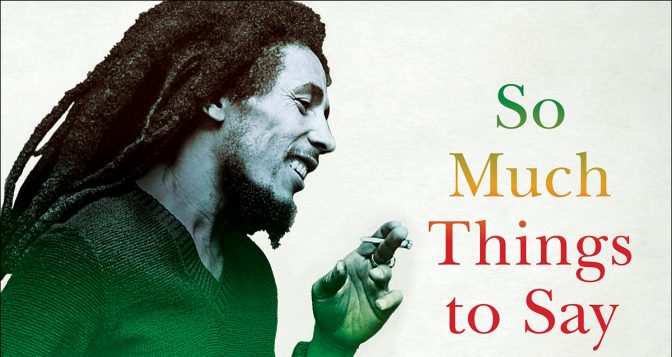Review: ‘So Much Things to Say: The Oral History of Bob Marley’

While such esteemed authors as Stephen Davis and the late Timothy White penned terrific biographies of Robert Nesta Marley, no writer is more knowledgeable about the Reggae King than Roger Steffens. It took him many years, but he finally completed his book: So Much Things to Say: The Oral History of Bob Marley (W. W. Norton).
Steffens is curator of the world’s largest reggae archives, which bursts the seams of his modest Echo Park bungalow in Los Angeles. The Vietnam veteran and photographer/archivist/historian has been an obsessive fan since he was mesmerized by a 1973 Rolling Stone review of the Wailers’ Catch a Fire. The next day, he watched the seminal Jimmy Cliff film, The Harder They Come, which cemented his lifelong obsession with reggae.
The author has created a reggae Rashomon in telling Marley’s story through more than 75 different interviews that frequently contradict each other. You won’t learn too much about Marley’s personal life or his series of relationships, though there’s plenty of input from Cindy Breakspeare, the former Miss World and mother of Marley’s son Damian, who Bob famously holed up with in London after the attempt on his life in Kingston in 1976.
RELATED: Review of Bob Marley and the Wailers’ Live! (Deluxe Edition)
Whether the storytellers should be taken at face value is up to the reader, but the harsh judgments of former Wailers Bunny Livingston and Peter Tosh must be weighed against their own grievances. The oral-history method sometimes leads to needless repetition, but the distinction between the thick patois of Bunny, Peter and Rasta compatriots like Pablove Black and the Westernized view of managers Danny Sims and Don Taylor or Island publicist Jeff Walker makes clear the narrow path Marley tried to walk in maintaining his Jamaican roots and expanding his sound to reach the Western world. Steffens even asked University of the West Indies professor Dr. Matthew Smith to “penetrate the patois,” especially when it comes to some of Bob’s enigmatic colloquialisms.
 EXCERPT: “Island released Catch a Fire with a painting of Bob with a slightly menacing look as he sucked on a giant spliff, a defiant challenge to all the anti-herb factions lining up to disparage Marley’s open use of marijuana. This man was a rebel.”
EXCERPT: “Island released Catch a Fire with a painting of Bob with a slightly menacing look as he sucked on a giant spliff, a defiant challenge to all the anti-herb factions lining up to disparage Marley’s open use of marijuana. This man was a rebel.”
The eyewitness accounts of the shooting at Marley’s 56 Hope Road home, the Smile Jamaica show and subsequent One Love Peace Concert—where Marley famously got opposing political-party leaders Edward Seaga and Michael Manley to join hands—are given a 360-degree view that incorporates a wide range of reminiscences and viewpoints. Bob himself appears only rarely; Steffens hung out with Tuff Gong for a handful of interviews, then devoted his life to exploring the ripples that moved outward from that very vibrant center.
RELATED: Business Is Booming for Marley Natural
Some of the more fascinating revelations include girlfriend Esther Anderson’s insistence that “I Shot the Sheriff” is in part about birth control (“Every time I plant a seed/He said kill it before it grow”); a young Betty Wright, who opened for Marley, having to cover her face with wet towels to fend off the thick ganja smoke because of her bronchial condition; and Rita Marley serving breakfast in bed to a cancer-riddled Bob.
The trajectory of Marley’s story—his mixed-blood heritage, retiring to the country to farm, a stint in Delaware working as a janitor, seeing Haile Selassie’s 1966 visit to Jamaica, the assassination attempt, the triumphant Independence Day concert in Zimbabwe in 1980, the final, cathartic show in Pittsburgh later that year and his shockingly quick demise from cancer in 1981—is all in So Much to Say, which reads almost like a primal superhero-creation story. For many of Steffens’ interviewees, Marley was just that, a prophet, a God-like figure who tried to galvanize the Third World with his songs of revolt, romance and, ultimately, redemption.
If you enjoyed this Freedom Leaf article, subscribe to the magazine today!

